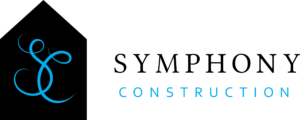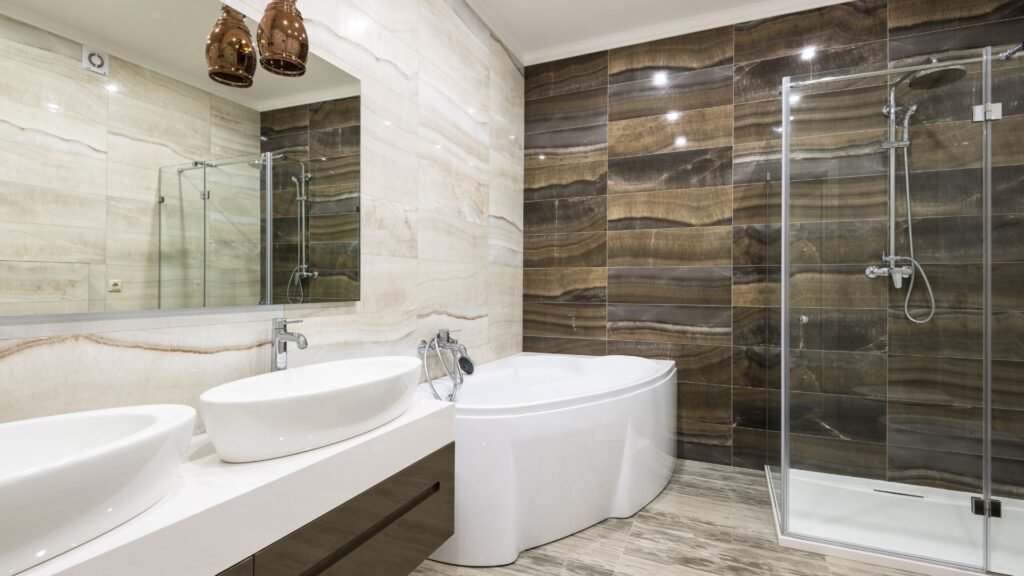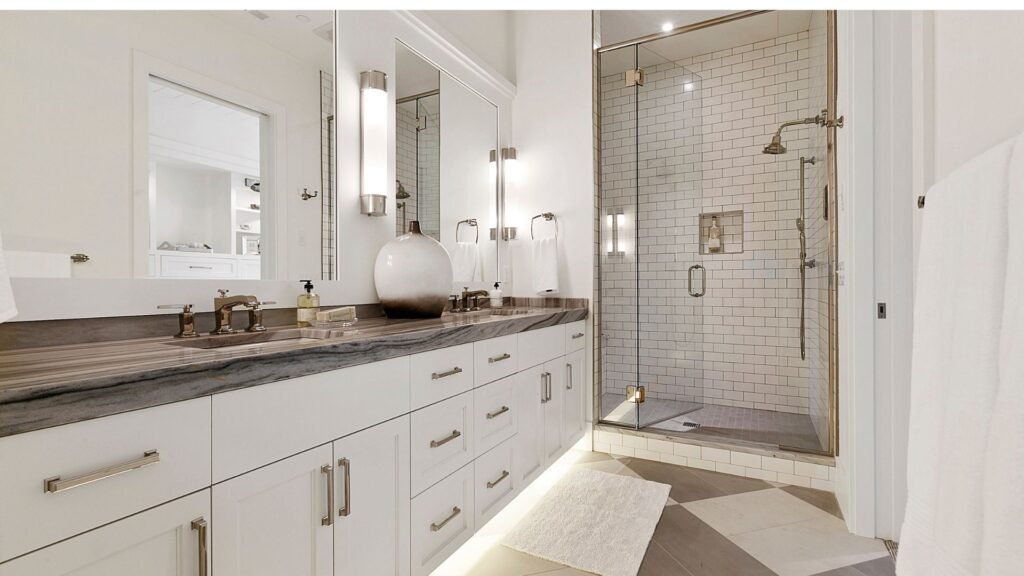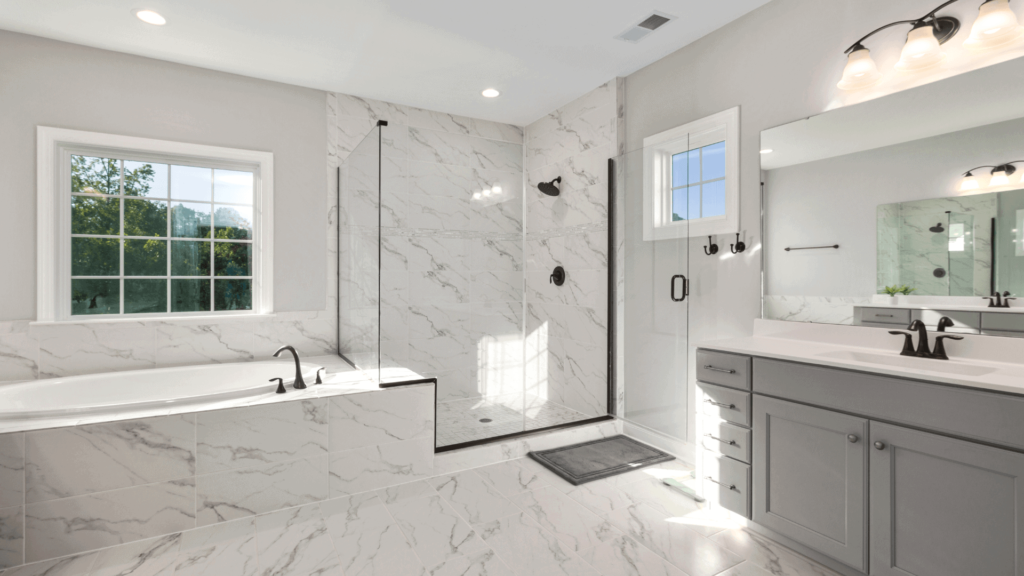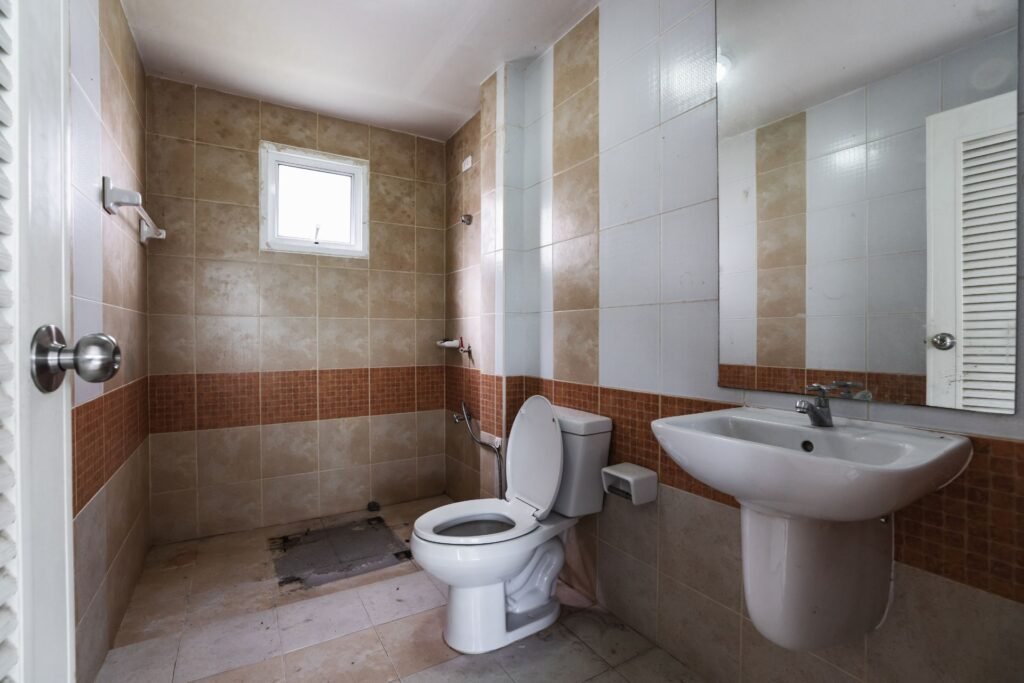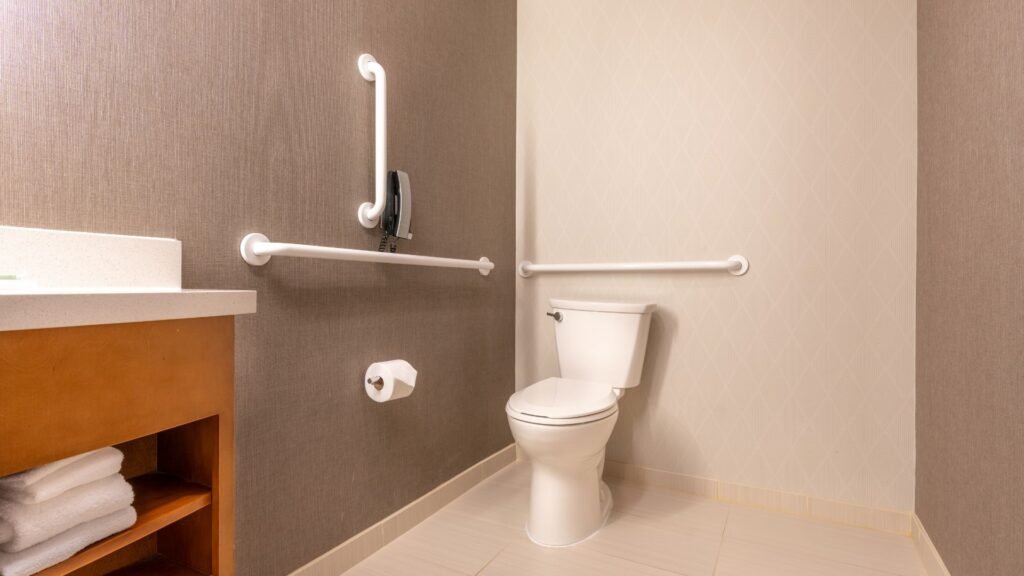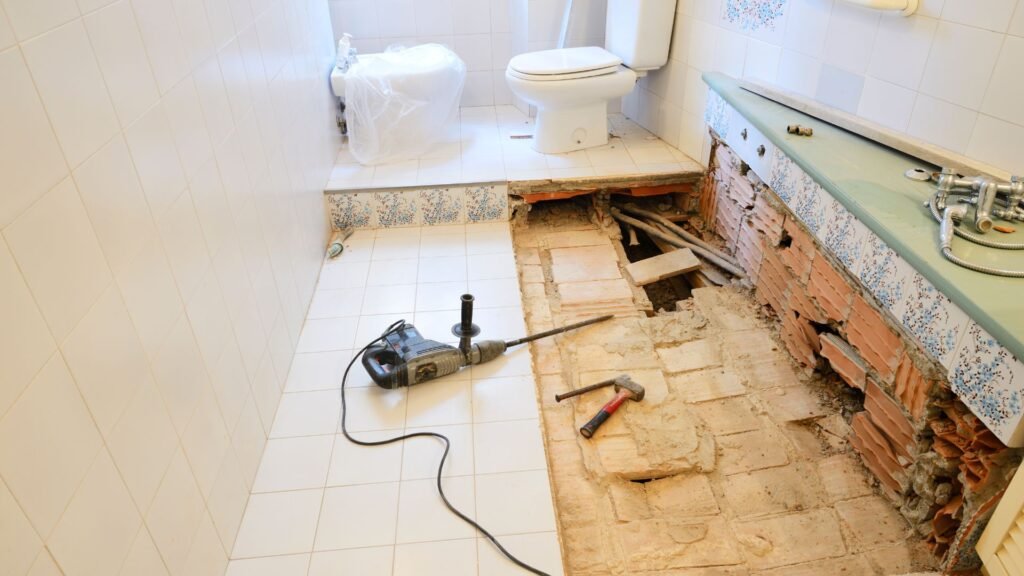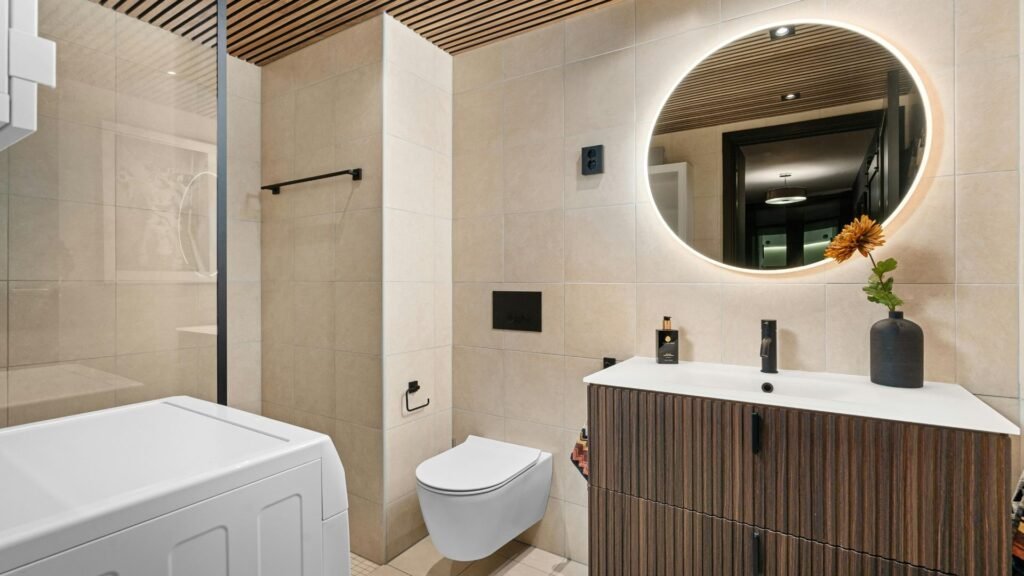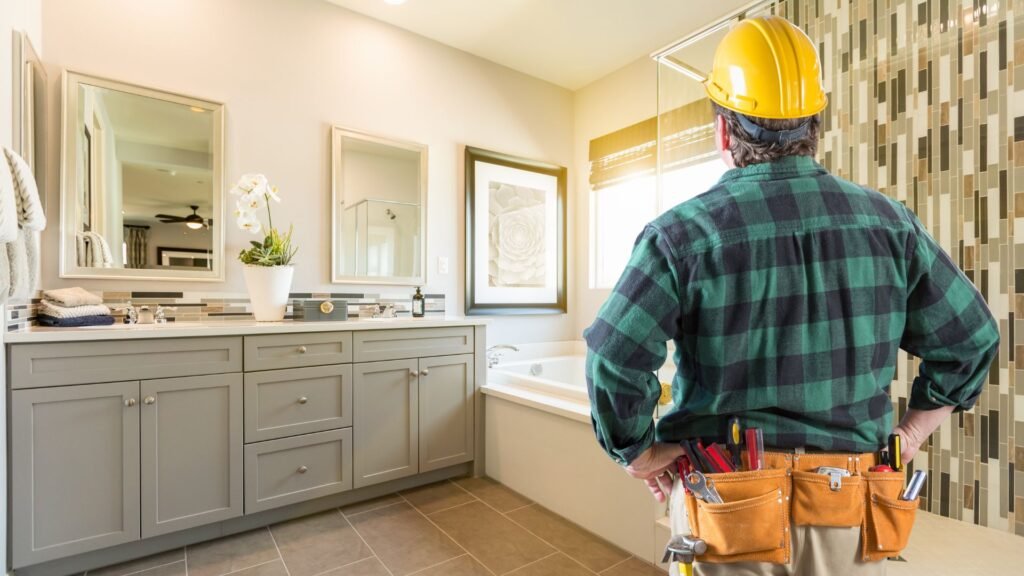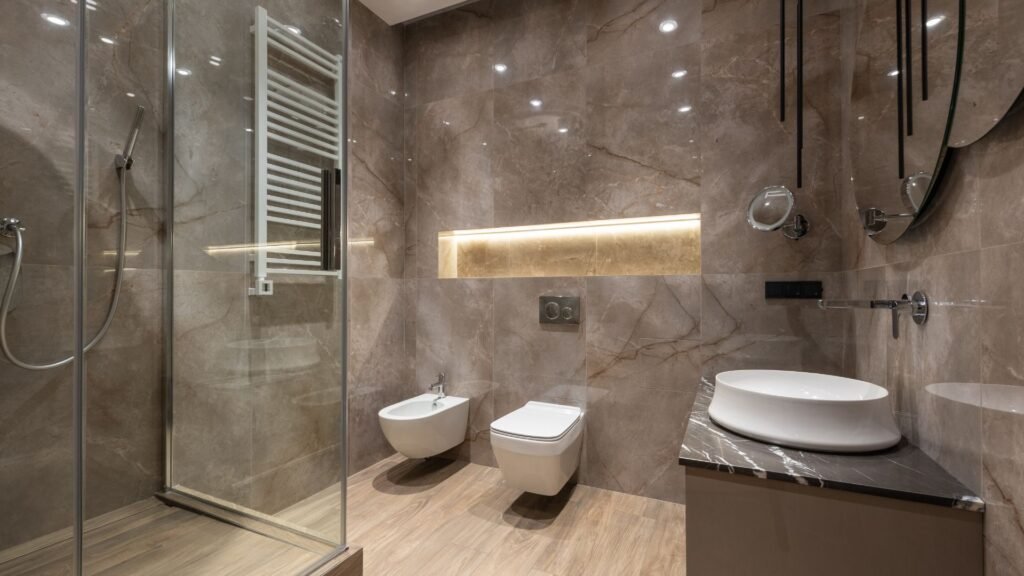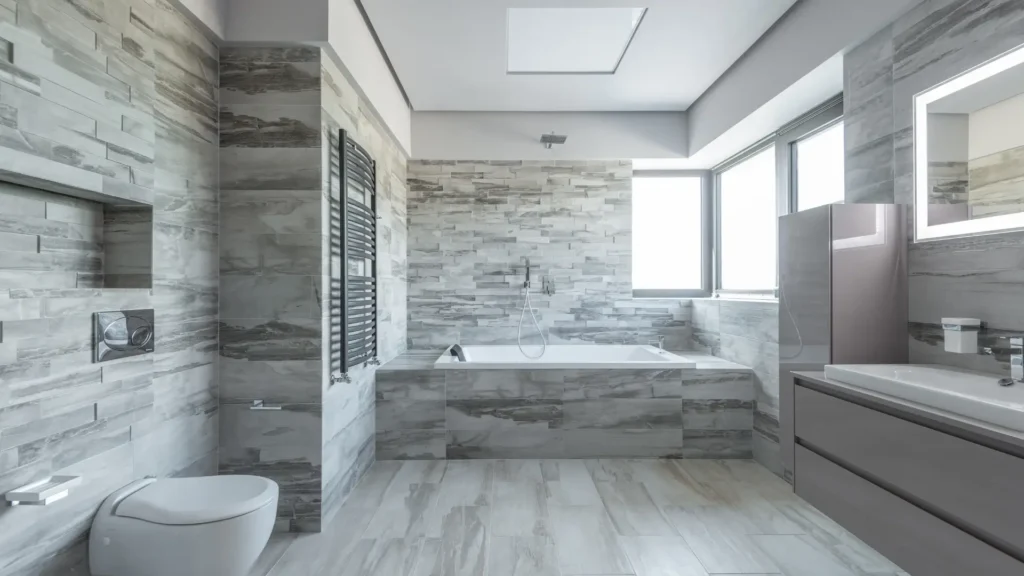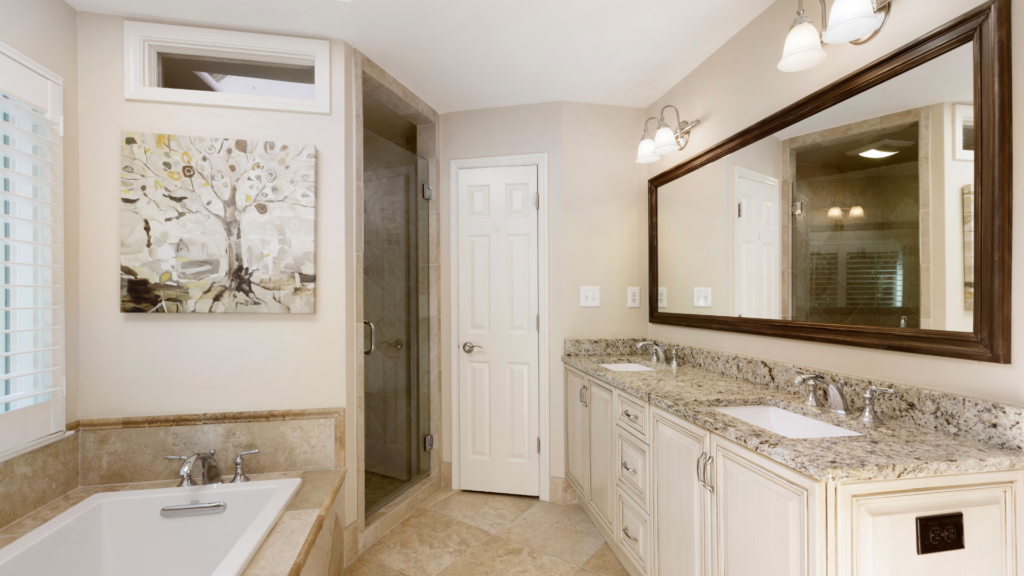Welcome to your go-to guide for bathroom renovations in NZ. Whether you’re updating a dated space, fixing layout issues, or adding value before selling, this guide will walk you through everything you need to know. From understanding typical renovation costs in New Zealand to exploring trending styles like tile drenching and mixed-metal finishes, you’ll find practical tips and real-world advice to help you plan confidently. Whether you’re dreaming of a spa-like retreat or a smart upgrade for everyday function, we’ve got insights tailored to Kiwi homes, budgets, and lifestyles, all in one place.
Bathroom renovations in NZ typically cost between $10,000 and $40,000, depending on the size, layout changes, and materials used. Popular trends include tile drenching, natural tones, and eco-friendly fittings. To renovate successfully, plan your budget, hire licensed NZ tradespeople, and focus on both function and style for long-term value.
Table of Contents
Why Renovate A Bathroom In NZ?
Renovating a bathroom in New Zealand isn’t just about making it look good, it’s a practical move that adds real value to your property and improves how you live day to day. Whether you’re planning to sell your home or simply want a space that works better for your lifestyle, a well-executed bathroom upgrade can make a big difference. Here’s why it’s worth the investment.
Boost Resale Value In NZ’s Property Market
One of the main reasons homeowners in New Zealand choose to renovate their bathrooms is to increase their home’s resale value. Bathrooms and kitchens are two of the most important spaces that influence buyers. A dated or poorly maintained bathroom can be a deal-breaker, while a modern, functional space can help your home stand out in a competitive market.
Based on insights from trusted NZ builders like Builders Kapiti, Cove Build, and Builder Connect, you can expect a renovated bathroom to cost anywhere from $10,000 to $30,000+, depending on the scope and quality of materials. While that might seem like a big investment, it can often deliver strong returns by lifting your home’s value and making it more appealing to buyers.
For example, a mid-range renovation with new fixtures, improved lighting, and updated tiling can elevate your property’s value significantly, especially in high-demand areas like Auckland, Wellington, or Christchurch.
Improve Everyday Comfort And Usability
Beyond financial benefits, bathroom renovations also improve your quality of life. An outdated bathroom can be frustrating to use, think poor lighting, leaky taps, cramped layouts, or a lack of storage. Renovating gives you the chance to fix these common issues and tailor the space to suit your daily routine.
Want a walk-in shower instead of an old tub? Need more storage for a growing family? Or maybe you’re ready to upgrade to underfloor heating or install better ventilation? A well-planned renovation makes your bathroom more enjoyable, more practical, and easier to maintain.
It’s not just about appearance, it’s about creating a space that works for how you actually live.
Handle NZ-Specific Issues (Damp, Council Consent)
New Zealand homes face unique climate challenges, especially in areas with high rainfall and humidity. Dampness, condensation, and mould can be common problems in older bathrooms that lack proper waterproofing or ventilation. Renovating allows you to address these issues head-on with solutions like extraction fans, moisture-resistant materials, and modern waterproofing techniques.
Also, NZ has specific building regulations. If your renovation involves changing plumbing or structural elements, you may need to apply for building consent through your local council. This step is important to ensure your project meets safety and compliance standards. Working with licensed tradespeople who understand these requirements will save you time, stress, and potential legal trouble down the road.
Renovating a bathroom in NZ is more than just a cosmetic upgrade. It’s a smart move that improves your home’s value, enhances your day-to-day comfort, and solves problems that are common in many New Zealand properties. Whether you’re renovating to sell or stay, the benefits are long-lasting and well worth the effort.
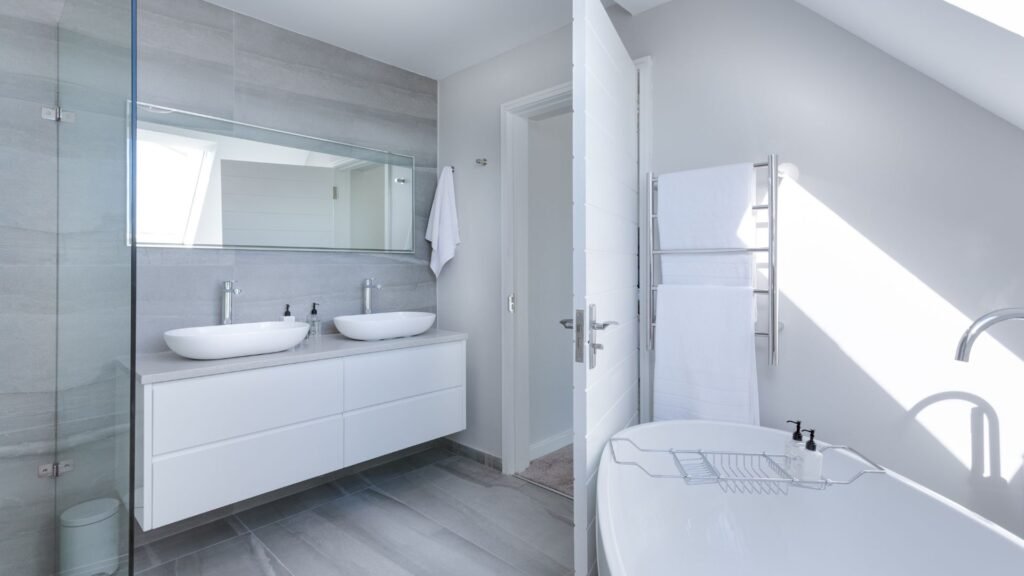
Understanding NZ Costs & Budget
When planning a bathroom renovation in New Zealand, understanding the typical costs involved is one of the most important steps. Renovation pricing can vary depending on the size of your bathroom, the complexity of the work, and the type of finishes you choose. Knowing what to expect financially will help you avoid surprise expenses and stay in control of your budget.
Typical Cost Bands
Bathroom renovation costs in NZ generally fall into three categories:
- Basic Renovations (NZ$10,000–15,000):
This price range suits cosmetic upgrades with minimal changes to plumbing or layout. You might install a new vanity, replace old tapware, repaint walls, and update fittings. These are ideal if your existing bathroom structure is in good shape but just needs a refresh. - Mid-Range Renovations (NZ$15,000–25,000):
This is the most common category for NZ homeowners. It typically includes a mix of functional and design improvements, such as installing new tiles, replacing fixtures, and possibly altering the layout slightly. Waterproofing, electrical work, and plumbing adjustments are often involved in this range. - High-End Renovations (NZ$25,000–40,000+):
If you’re after a complete overhaul or a luxury look, expect costs to climb. These projects often include custom joinery, premium fittings, underfloor heating, large-format tiles, full waterproofing systems, and smart technology. High-end bathroom renovations are more complex and require a team of licensed professionals.
Cost Drivers To Watch
Several key factors influence your renovation budget:
- Layout Changes:
Moving plumbing fixtures like the shower, toilet, or sink will raise costs significantly. It involves cutting into floors, walls, and sometimes reinforcing structures. - Plumbing and Electrical Work:
Licensed work is non-negotiable in New Zealand. Replacing old pipes, wiring, or installing new lighting increases both material and labour costs. - Waterproofing:
This is essential for NZ bathrooms due to the country’s humid climate. Skipping this step can lead to moisture damage and future expenses. - Material Choices:
From tiles and paint to tapware and cabinetry, prices vary widely. Imported materials or designer brands cost more but don’t always add long-term value unless paired with a strong design plan.
Smart Ways To Save
You don’t need to compromise on quality to stick to a reasonable budget. Here are some practical ways to reduce costs without cutting corners:
- Keep The Existing Layout:
Keeping plumbing and electrical points where they are reduces the need for expensive labour. It also speeds up the renovation timeline. - Reuse What You Can:
If some elements of your bathroom are still in good condition, like the bathtub, vanity, or mirror, consider reusing them. Even keeping the toilet cistern can shave off hundreds of dollars. - Compare Quotes From Multiple Contractors:
Get at least three quotes from local NZ builders or renovation companies. This helps you understand fair pricing and avoid being overcharged.
Understanding your budget before starting a renovation project helps set realistic expectations and ensures smoother project planning. Whether you’re aiming for a modest refresh or a full luxury upgrade, smart budgeting decisions will help you achieve a result that balances style, durability, and long-term value.
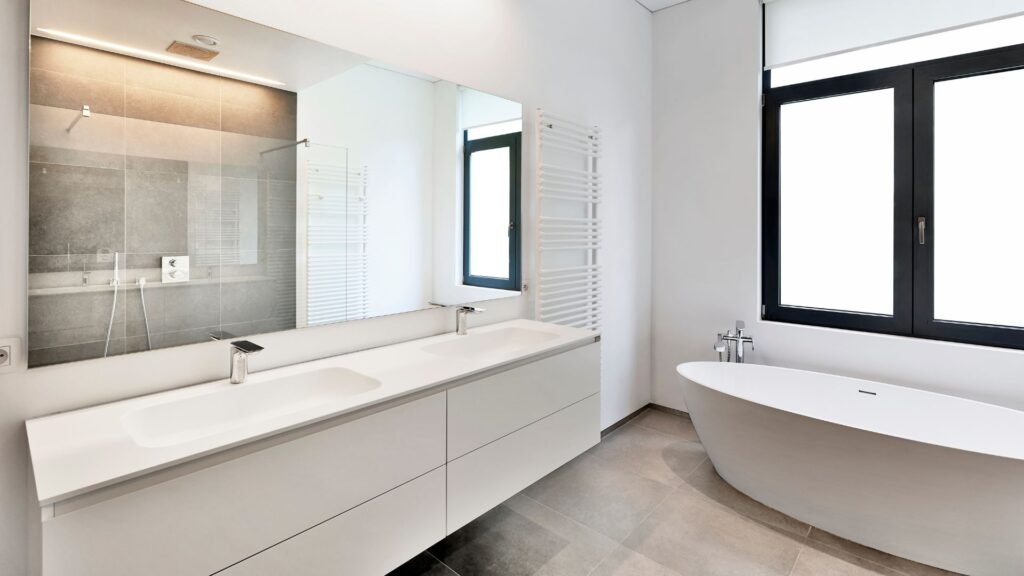
Planning & Pre-Renovation Checklist
Before jumping into a bathroom renovation, careful planning is what separates a smooth project from a stressful one. Whether you’re updating an outdated space or building your dream bathroom from scratch, it’s important to take the time to clarify your goals, understand local regulations, and organize your priorities. This section covers the key steps every New Zealander should follow before hiring a contractor or picking up a tile sample.
Clarify How You’ll Use the Space
Start by thinking about how your bathroom fits into your daily routine. Will it be a high-traffic family bathroom, a master ensuite, or a guest powder room? Your answer impacts everything from storage to fixture placement. If you’re planning to live in the home long-term, think about future needs like accessibility, aging in place, or growing families. For example, walk-in showers, non-slip flooring, or wider doorways might be worth considering if accessibility is a concern. The way you intend to use the space should always guide your design choices.
Understand Regulatory Requirements In NZ
New Zealand has strict building codes and regulations, especially when it comes to bathrooms. If your renovation involves structural changes, plumbing modifications, or major electrical work, you’ll likely need council consent. It’s also a legal requirement to use licensed professionals for plumbing and electrical jobs. This protects your investment and ensures safety and compliance. Always check with your local council before starting, and keep records of all approvals and documentation.
Plan Your Space Effectively
One of the most common renovation mistakes is poor space planning. Start by measuring your bathroom accurately, length, width, and ceiling height. Don’t forget to factor in door swings, window placement, and existing plumbing points. Once you have your measurements, sketch a few layout ideas or use digital design tools to visualise the space. If you’re unsure, a professional designer or renovation company can help you make the most of your floor plan. This step helps you avoid costly mistakes and awkward layouts later on.
Set Your Priorities Early
With so many options available, it’s easy to get overwhelmed. That’s why you should create a clear list of must-haves versus nice-to-haves. Must-haves might include a walk-in shower, double vanity, or better ventilation. Nice-to-haves could be underfloor heating, designer tapware, or statement lighting. Having these priorities in place will help you make smart decisions if your budget gets tight. It also keeps your project focused and aligned with your goals.
In short, successful bathroom renovations in New Zealand start long before the demo day. By understanding your lifestyle needs, checking off legal requirements, planning the space carefully, and setting clear priorities, you lay the foundation for a renovation that’s functional, stylish, and stress-free. This approach not only saves time and money but also ensures your bathroom works for you today and into the future.
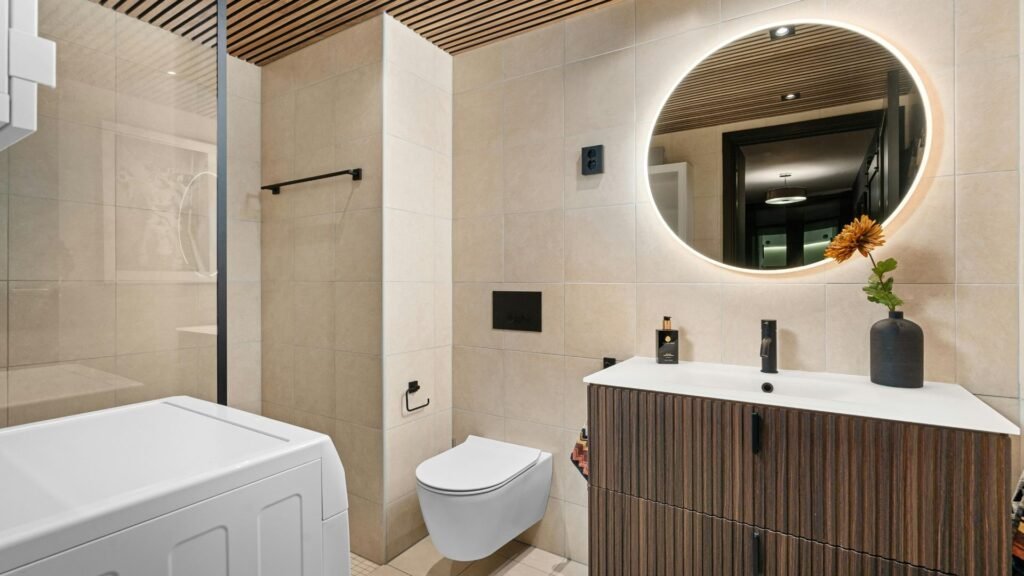
NZ Trends For 2025: Design Ideas & Inspiration
Bathroom renovations in New Zealand are seeing a fresh wave of design trends heading into 2025. These trends balance modern style with everyday practicality, making them ideal for Kiwi homeowners who want both beauty and function. Whether you’re updating a tired ensuite or doing a full family bathroom remodel, these ideas reflect what’s popular, what works well in NZ homes, and how you can create a space that feels current without sacrificing comfort or longevity.
Earthy Neutral Palettes And Natural Tones
In 2025, colour palettes are shifting away from stark whites and moving toward earthy, calming tones. Popular colours include sage green, terracotta, and soft, muted greens, shades that bring a touch of nature indoors. These tones pair well with warm wood finishes, such as oak or walnut, which add richness and warmth to the room. This natural colour scheme helps create a relaxed, spa-like environment, and it also hides daily wear better than bright, clinical finishes. Many NZ homeowners are using these colours to reflect the country’s outdoor lifestyle and connection to nature.
Tile Drenching And Texture-Rich Surfaces
Tile drenching is one of the standout design statements in 2025. This technique involves using the same tile on the floor and walls, extending from floor to ceiling for a sleek, cohesive look. It creates a sense of visual continuity that can make smaller bathrooms appear larger and more modern. Popular tile patterns include herringbone, checkerboard, and basketweave, each offering subtle texture without overwhelming the space. These styles work well in both contemporary and traditional bathrooms, offering design flexibility for different home styles across New Zealand.
Mixed-Metal Finishes And Statement Fixtures
Gone are the days of matching chrome fixtures throughout the bathroom. In 2025, mixed-metal finishes are taking the spotlight. Homeowners are combining copper, brushed gold, matte black, and satin nickel to create visual interest. This approach adds depth and personality without feeling overdone. Pairing these finishes with sculptural vanities or freestanding tubs can elevate the entire space. These statement pieces become focal points and are ideal for those looking to make a bold impression while maintaining functionality.
Eco-Friendly Materials And Smart Features
Sustainability remains a key focus in New Zealand design, and bathroom renovations are no exception. More Kiwis are choosing eco-friendly materials like bamboo cabinetry, reclaimed wood-look panels, and recycled glass tiles. These options reduce environmental impact while still delivering a high-end finish. Water-saving fittings, such as low-flow showerheads and dual-flush toilets, are now standard in many new builds and renovations. Smart technology is also becoming more common, with features like underfloor heating, sensor taps, digital temperature controls, and built-in water filtration systems adding both luxury and efficiency.
Why These Trends Matter For NZ Homeowners
These 2025 trends reflect a shift toward timeless design with practical benefits. They work well with NZ’s climate, building styles, and focus on sustainability. Earthy tones create relaxing environments. Tile drenching adds depth and style. Mixed metals and standout fixtures personalize the space. Eco materials and smart tech future-proof your bathroom while reducing energy and water use. Following these trends not only boosts the look and feel of your home but can also increase resale value, especially in competitive NZ housing markets like Auckland, Wellington, or Christchurch.
If you’re planning a renovation, using one or more of these ideas can help you create a bathroom that feels fresh, personal, and built to last.
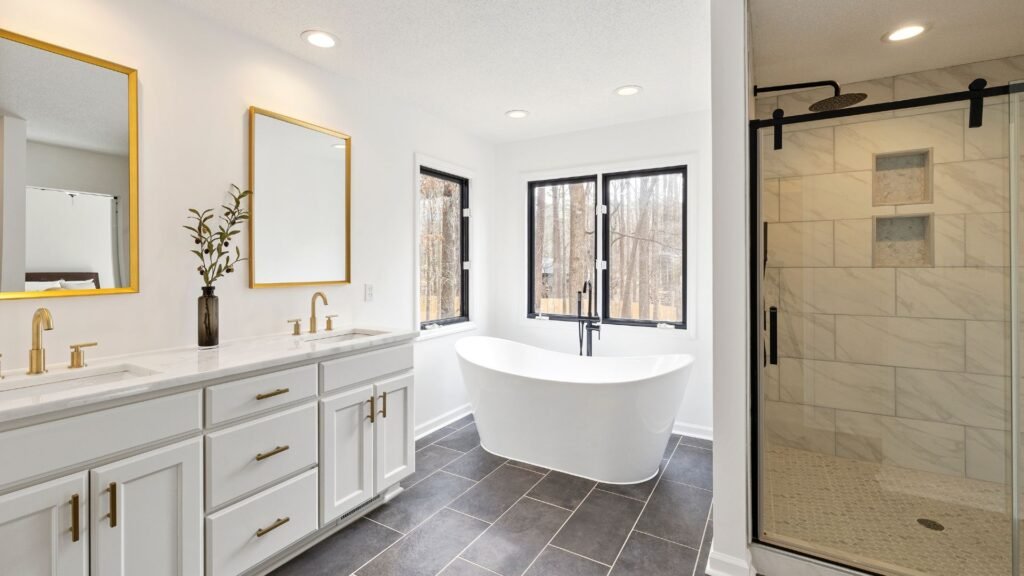
Practical NZ-Specific Tips For Bathroom Renovations
When renovating a bathroom in New Zealand, you need to think beyond just design. The country’s unique climate, housing styles, and building standards require a more practical approach. This section covers smart, NZ-specific tips that improve function, prevent future issues, and make your bathroom more enjoyable to use every day.
Moisture Control Is A Must
New Zealand homes often face moisture-related challenges, especially in older or poorly ventilated properties. Bathrooms, by nature, are high-moisture zones, making proper moisture control a priority. Start with high-quality waterproofing for floors, walls, and wet areas. This is essential to prevent leaks and long-term water damage. Install a powerful extraction fan to remove steam and reduce humidity after showers. Choose paints and finishes designed to resist mould growth, especially on ceilings and corners. Without these precautions, your bathroom could become a breeding ground for mould and mildew, leading to expensive repairs down the line.
Smart Lighting Makes A Big Difference
Good lighting isn’t just about visibility, it’s about comfort, safety, and aesthetics. Combine different types of lighting to create a balanced atmosphere. Ambient lighting provides general illumination, task lighting (such as above the vanity) helps with grooming, and accent lighting can highlight design features or art. LED lights are energy-efficient and long-lasting, making them a smart choice for NZ homes. Use dimmable switches or motion sensors to improve usability and reduce power usage. By layering lighting properly, you make the space feel larger, warmer, and more functional, no matter the time of day.
Space-Saving Storage Ideas
Storage is often overlooked, but it can make or break your bathroom’s usability. Floating vanities are a great option for small or modern NZ homes. They create a sense of openness while offering plenty of under-basin storage. Recessed niches in showers or walls provide clean, practical spaces for everyday items without adding clutter. Mirrored cabinetry is another smart solution, combining function, storage, and visual expansion in one. When planning your layout, think vertically and use wall space for shelves or cabinets to keep the floor area open.
Design Tips For Small NZ Bathrooms
Many New Zealand homes, especially older ones, have compact bathrooms. To make a small space feel larger, use light, neutral colours like soft greys, whites, or pastels. These tones reflect light and give the illusion of more space. Choose reflective surfaces, such as gloss tiles or large mirrors, to bounce light around the room. Corner showers with frameless glass panels save valuable floor space without making the room feel cramped. Open shelving adds storage without visual bulk and allows you to display towels or décor for a lived-in, personal feel.
By applying these NZ-specific strategies, you can create a bathroom that’s practical, durable, and visually appealing. Whether you’re upgrading a dated space or starting fresh, these details help your renovation stand the test of time while meeting the unique needs of New Zealand homes.
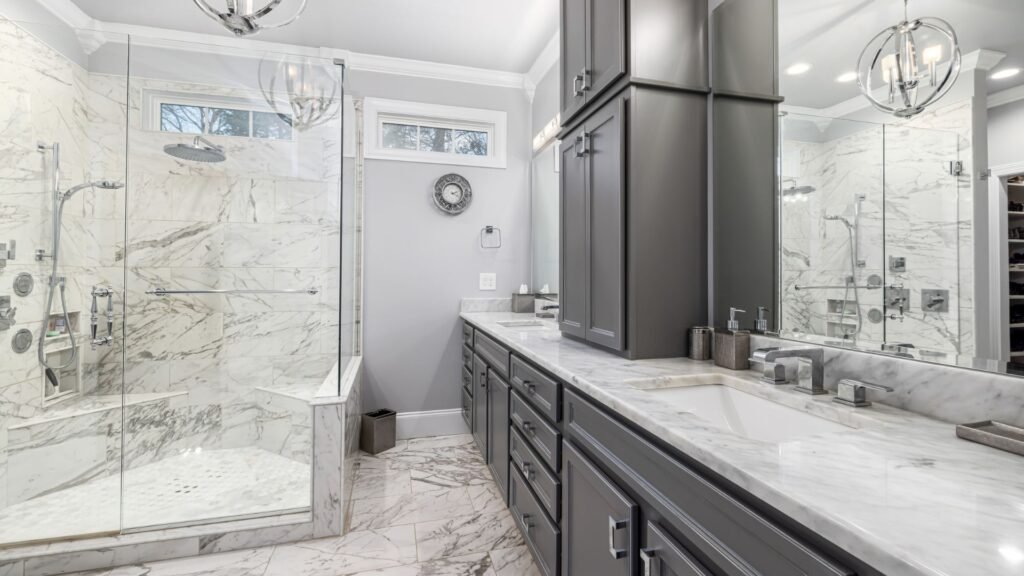
Renovation Process Step‑By‑Step
Renovating a bathroom in New Zealand involves more than just choosing tiles and tapware. It’s a structured process that requires careful planning, skilled trades, and an understanding of building standards. Here’s a detailed, step-by-step look at how a typical bathroom renovation unfolds in NZ homes.
Prep And Demolition
The first stage is preparation and demolition. This involves clearing out the old bathroom by safely removing existing fixtures, cabinetry, tiles, and flooring. It’s important to shut off water and power before starting any work. All waste must be handled responsibly, especially when it comes to plumbing materials, old tiles, and drywall. In New Zealand, waste disposal must follow local council regulations, which may include sorting and transporting certain items to approved facilities. Hiring a professional for demolition can help avoid accidental damage to plumbing or electrical lines and ensures everything is removed with minimal disruption.
Plumbing, Electrical, And Waterproofing
After demolition, licensed professionals step in to handle the plumbing and electrical setup. Whether you’re relocating a toilet, upgrading your shower, or installing underfloor heating, it’s critical that these tasks are performed by registered tradespeople. This ensures all work meets New Zealand building codes and safety requirements. Waterproofing is another essential step at this stage. A certified waterproofer will apply membranes to protect your bathroom from moisture damage and future mould problems. Skipping or cutting corners on waterproofing can lead to major issues down the track, especially in high-humidity areas like Auckland and Wellington.
Tiling And Surfaces
Once the bathroom is sealed and prepped, tiling or panel installations begin. Many NZ homeowners are choosing tile drenching, covering walls and floors with the same tile for a clean, cohesive look. If you prefer a quicker install, waterproof wall panels are a good alternative. Whether you go for traditional ceramic tiles or modern textures, always choose non-slip flooring materials that meet NZ safety standards, especially if the bathroom will be used by children or elderly family members.
Fixtures And Finishing
Now it’s time to install your new fixtures. This includes the toilet, vanity, shower, bath, mirrors, and storage cabinets. Choose products that balance durability, water efficiency, and style. For high-use areas like the shower and vanity, opt for tapware with proven corrosion resistance. Consider brushed nickel, matte black, or chrome finishes, popular choices in New Zealand that match a range of bathroom styles. Flooring should be slip-resistant and easy to maintain, while cabinets should resist warping in moist conditions. If you’re working with a smaller space, floating vanities or mirrored cabinets help to open up the room visually.
Final Touches
This is where the bathroom comes to life. Painting the walls with mould-resistant paint helps keep the space fresh and low-maintenance. Good lighting is crucial, combine ambient lighting with brighter task lighting near the mirror or vanity. Then, finish the look with accessories that tie into your chosen theme. Think towel rails, soap dispensers, shower shelves, or a simple plant. These final details can make the difference between a generic space and one that feels warm, practical, and personalised.
Each step in the bathroom renovation process plays a key role in delivering a space that’s safe, stylish, and functional for everyday Kiwi living. By taking the time to plan each phase, and working with licensed NZ professionals, you’ll end up with a bathroom that stands the test of time.
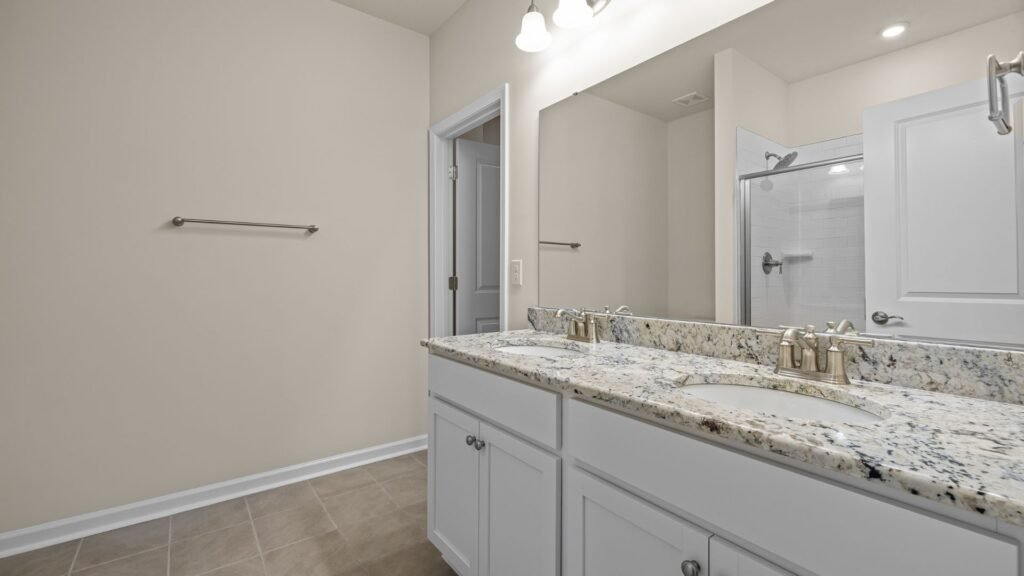
Common Mistakes To Avoid During Bathroom Renovations In NZ
When renovating a bathroom in New Zealand, avoiding common mistakes can save you time, money, and frustration. Many homeowners rush into their renovation with excitement but overlook important details that can lead to costly setbacks or poor long-term results. Here’s a closer look at five common mistakes you should avoid to ensure your project goes smoothly and adds real value to your home.
- Rushing Planning Or Design
Skipping the planning phase is one of the most common errors homeowners make. A rushed design often leads to poor layout choices, wasted space, or the need for expensive changes later on. Take the time to consider how your bathroom is used daily, who will use it, and what features are essential. A well-thought-out plan not only helps with budgeting but also ensures the end result is functional, attractive, and suits your lifestyle. Use sketches, mood boards, and even free design tools to visualise the space before any work begins. - Ignoring Ventilation (Leads To Mould)
New Zealand homes often deal with high humidity, especially in bathrooms. Poor ventilation creates the perfect environment for mould and mildew, which can damage walls, ceilings, and health. Installing an extractor fan that vents moisture to the outside is not optional, it’s essential. Also, consider windows that can open, dehumidifiers, and moisture-resistant paint. This small step protects your investment and ensures the space stays clean and healthy. - Hiring Unlicensed Trades Without Contracts
It might be tempting to save money by hiring someone offering a cheap quote, but using unlicensed tradespeople can lead to substandard work and legal issues. Always check credentials, licenses, and reviews. Use written contracts that clearly outline the scope of work, materials, payment terms, and timelines. This protects both you and your contractor and sets expectations from the start. - Choosing Style Over Function
Trendy bathrooms look great online, but they may not work well in everyday use. For example, choosing a floating vanity with no storage or a freestanding tub that takes up too much space can hurt usability. While it’s fine to aim for a modern design, don’t sacrifice comfort and practicality. Think about how the space will be used daily and prioritize smart storage, durable surfaces, and easy-to-clean materials. - Not Planning For Future Needs
If you’re planning to stay in your home long-term, think about future needs. Will the bathroom still be practical in 5–10 years? Consider features like walk-in showers, non-slip flooring, and wider doorways for accessibility. Even if you don’t need them now, these updates can future-proof your space and appeal to buyers down the line. It’s easier and more cost-effective to make these changes during a full renovation than to retrofit later.
Avoiding these common renovation mistakes can make a big difference in how your bathroom looks, functions, and lasts over time. By planning carefully, hiring the right people, and focusing on practical needs, you’ll create a bathroom that not only looks great but also works well for your daily life in New Zealand.
Visit our homepage to explore how we can help bring your ideas to life. From design to installation, we make the process clear, simple, and stress-free.
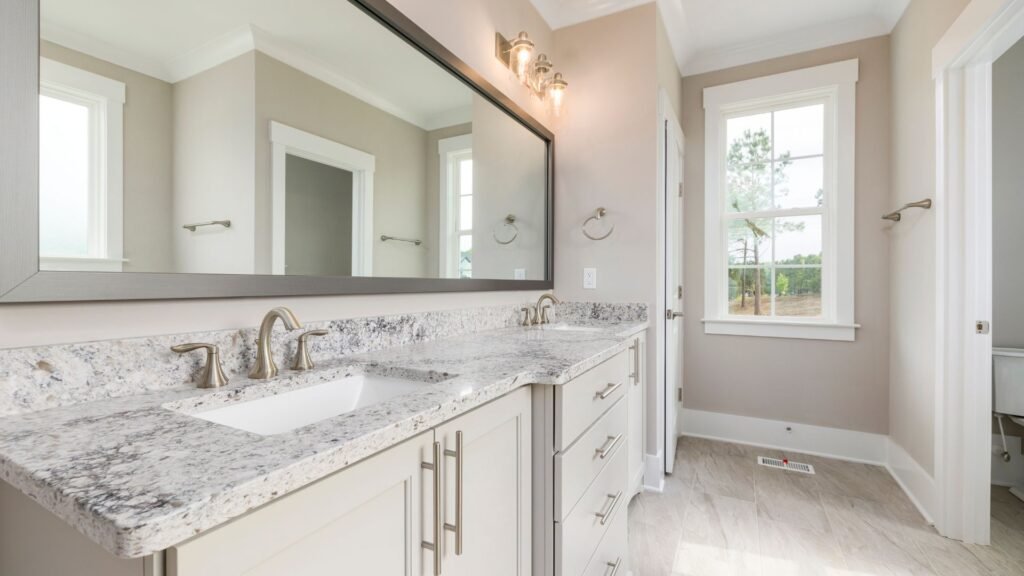
FAQs: About Bathroom Renovations In NZ
How much does a bathroom renovation cost in New Zealand?
Bathroom renovation costs in NZ typically range from $10,000 to $40,000. A basic upgrade may cost around $10K–$15K, mid-range projects average $15K–$25K, and high-end renovations can exceed $30K depending on size, materials, and layout changes.
Do I need building consent for a bathroom renovation in NZ?
You may need building consent if the renovation involves structural changes, new plumbing layouts, or electrical work. Always check with your local council or work with licensed professionals who can advise on compliance.
How long does a bathroom renovation usually take?
Most full renovations take 3 to 6 weeks from demolition to final fittings. This timeline can vary based on complexity, availability of materials, and contractor schedules.
Can I renovate a bathroom on a $10,000 budget?
Yes, if you maintain the existing layout, reuse some fittings, and choose cost-effective materials. Labour and waterproofing will still take up a large part of the budget, so smart planning is essential.
What are the latest bathroom design trends in NZ?
Popular trends include tile drenching (floor-to-ceiling tiles), warm neutral palettes, mixed-metal tapware, floating vanities, and smart tech like sensor taps and underfloor heating.
What’s the most expensive part of a bathroom renovation?
Plumbing and waterproofing are typically the most costly. Changing the layout, relocating the toilet or shower, and installing tiled walk-in showers can significantly increase your budget.
How can I make a small NZ bathroom feel bigger?
Use light, reflective surfaces like gloss tiles, install a large mirror, add recessed storage, and consider frameless glass showers. Floating vanities also create the illusion of more space.
Are bathroom renovations worth the investment?
Yes. A well-done bathroom renovation can add significant resale value and appeal to buyers. It’s one of the top rooms that influences home value in the NZ property market.
Should I hire a professional or do it myself?
DIY is possible for minor cosmetic changes, but plumbing, electrical, and waterproofing must be done by licensed trades. For full renovations, hiring professionals ensures code compliance and quality.
What should I consider before starting a renovation?
Think about your needs, budget, future plans, and how long you’ll stay in the home. List must-haves, get multiple quotes, confirm council requirements, and review design inspiration that fits your lifestyle.
Conclusion
Now that you have a clear understanding of bathroom renovations in NZ, from costs and trends to practical design tips, it’s time to start planning your own project based on your needs, lifestyle, and budget. Use the ideas in this guide to shape a space that works for you, whether you’re upgrading for comfort, function, or resale value. Start by gathering quotes from licensed local tradespeople and suppliers you can trust. Compare options, check reviews, and don’t rush your decisions. Visualise your ideal layout using mood boards or free design tools to avoid costly changes later. Make the most of online cost calculators, browse trusted NZ suppliers, and explore galleries for design inspiration that suits your space. The more informed and intentional your planning, the smoother your renovation will go, and the more satisfied you’ll be with the result.
About the Author:
Mike Veail is a recognized digital marketing expert with over 6 years of experience in helping tradespeople and small businesses thrive online. A former quantity surveyor, Mike combines deep industry knowledge with hands-on expertise in SEO and Google Ads. His marketing strategies are tailored to the specific needs of the trades sector, helping businesses increase visibility and generate more leads through proven, ethical methods.
Mike has successfully partnered with numerous companies, establishing a track record of delivering measurable results. His work has been featured across various platforms that showcase his expertise in lead generation and online marketing for the trades sector.
Learn more about Mike's experience and services at https://theleadguy.online or follow him on social media:
